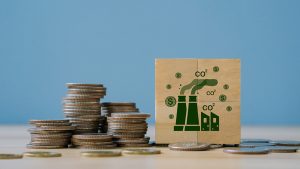Scarcely a week passes without an announcement of a new project to take carbon out of the atmosphere and sequester it, somewhere.
Most of these projects aren’t particularly new. But the climate deal that was struck in Paris before Christmas has served to make more people aware of the need to do something to help our warming world. And the mass media has started to pay attention.
The research projects in the news now had their genesis long before the Paris accord. They were just flying under most people’s radar.
We know we have to take carbon out of the atmosphere, but after we’ve done that, then what? Sequestering it underground in suitable geological formations is the option that most folks think of. But what if we could, instead, use it to make stuff? Biofuels maybe. Plastics. Building materials.
Newlight Technologies is removing methane from the air to make plastics at its plant near Los Angeles, then turning the plastics into things like cases for mobile phones.
And an Australian company called Mineral Carbonation International launched a pilot project just last week to find ways to use CO2 in building materials. Cement. Drywall. Things we need.
What the company is trying to do is find out whether there is commercial potential for its process, which chemically binds CO2 with minerals that contain calcium or magnesium to form stable materials.
The firm is crushing serpentinite rocks to combine with CO2 to get magnesium carbonate. And that’s what will be used to make building materials.
Serpentinite is a soft rock made up mostly of magnesium silicate. It’s usually dark green, although sometimes it’s mottled. It is easily cut and takes a high polish, which makes it useful for decorative stonework. Or maybe you can grind it up and use it in cement or drywall.
The company and its plant is located at the University of Newcastle, near Sydney, Australia, but one of the experts on mineral carbonation is Klaus Lackner, director of the Center for Negative Carbon Emissions at Arizona State University. He says that the carbonation process ought to be a way of disposing CO2 "permanently and safely," and making useful products in the process.
It’s a natural process, after all. Carbonation is what happens when rocks are exposed to CO2 in the air. They become weathered. But that takes an extremely long time.
So Mineral Carbonation International wants carbonation to happen in a factory. The CO2 it’s using comes from a nearby explosives plant where it’s produced as a byproduct of the manufacturing process.
The project has challenges ahead of it.
Serpentinite is plentiful, but mining it requires a lot of energy, and it’s damaging to the environment. The idea, is, ultimately, to locate plants near mining areas.
And the process is still expensive. At the moment, sequestering CO2 underground still promises to be cheaper. A power plant in southern Saskatchewan is doing it with moderate success, but on a small scale. At the moment, there is no operating facility anywhere that’s sequestering CO2 in quantities large enough to make a difference.
Carbonation is said to be more secure in the long term then underground repositories. Those repositories could leak. Carbonation won’t. But the process needs to be speeded up and maintained with less heat.
The Australian project is scheduled to last 18 months. Although team members are optimistic, there is no iron-clad guarantee that the project will yield anything that can be scaled up to a level that’s commercially viable.
The construction industry, which is often criticized because of high emissions of greenhouse gasses in the manufacture of cement and steel, will be watching. So circle September 2017 on your calendar. By then we ought to know if we can put CO2 to good use in the manufacture of construction materials — at a price we can afford.
Korky Koroluk is an Ottawa-based freelance writer. Send comments to editor@dailycommercialnews.com.










Recent Comments
comments for this post are closed